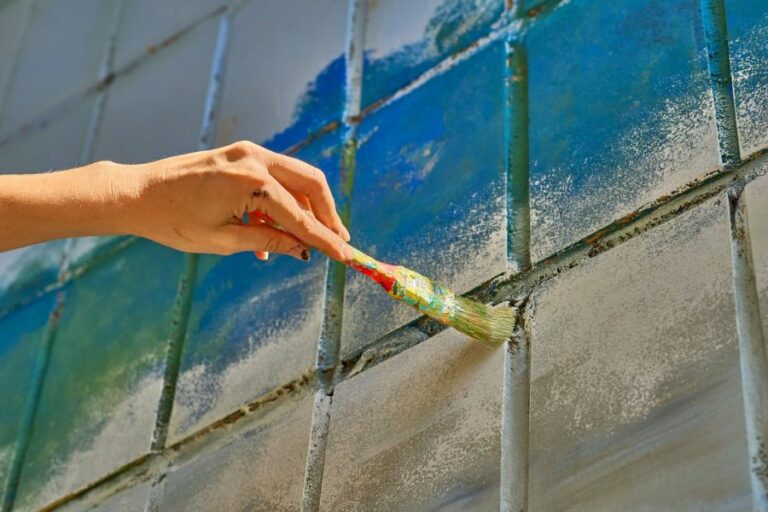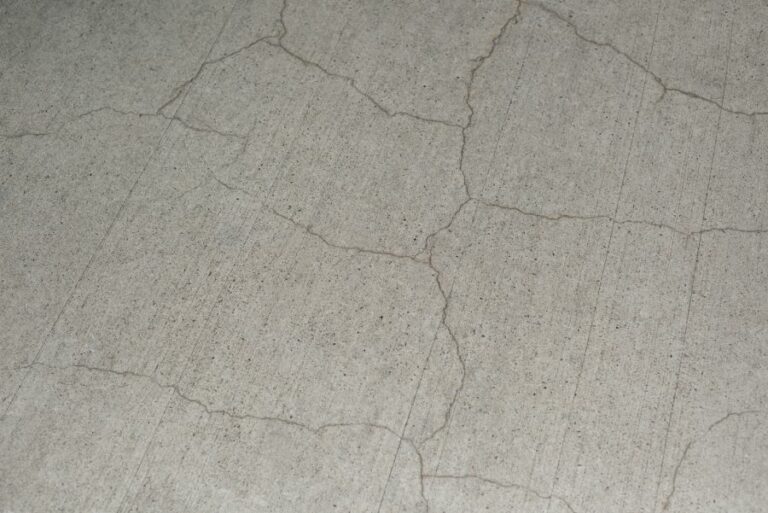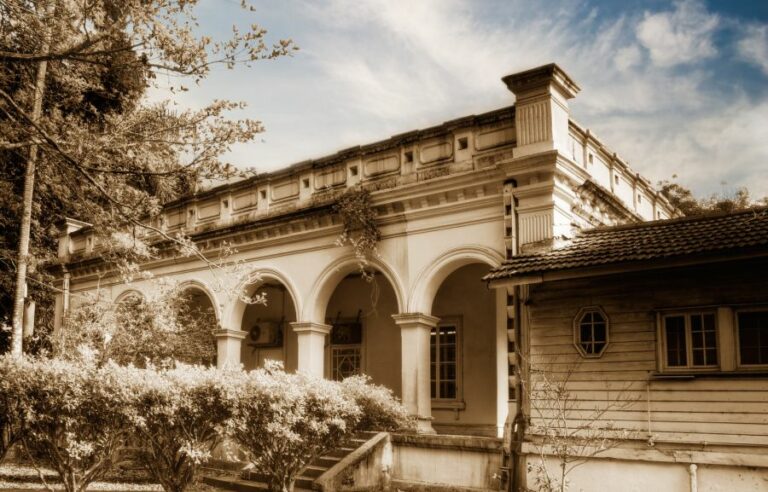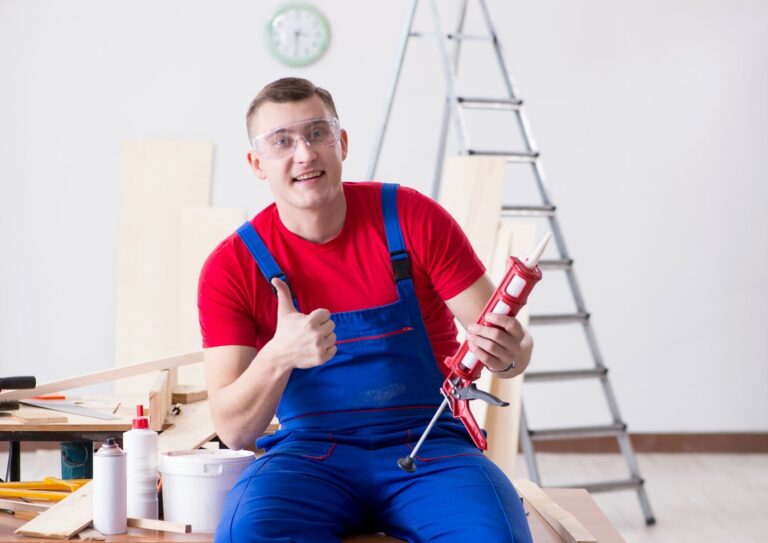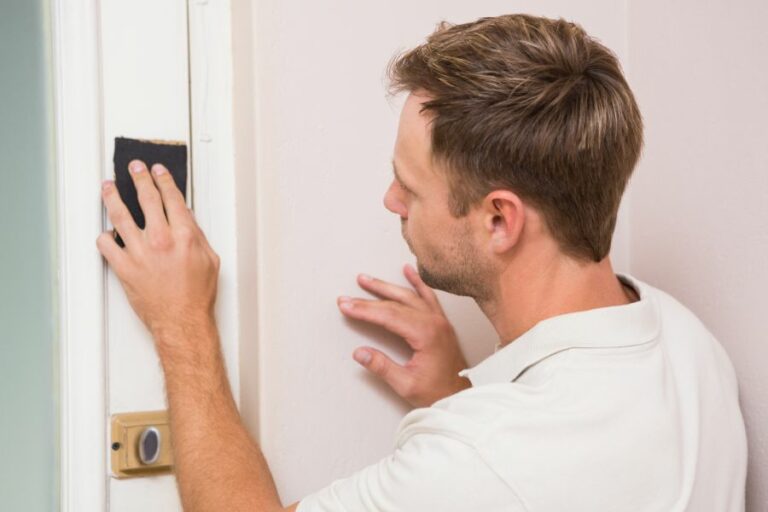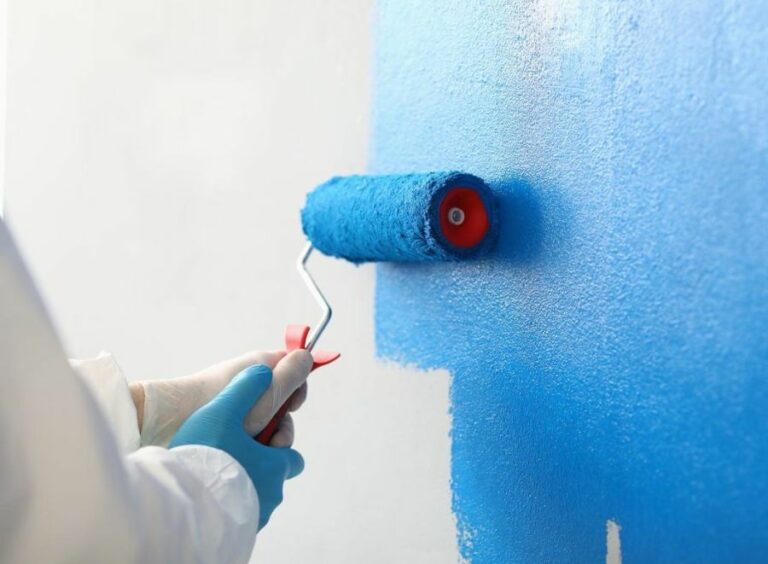Proper Prep: Eliminate Mold And Mildew. What Pros Say
Mold and mildew – these two common household problems can be more than just unsightly. They pose health risks and can cause damage to your home if left untreated. We’ve got your back. With proper preparation and techniques, you can effectively eliminate mold and mildew from your surroundings and prevent their return.
Proper prep: eliminate mold & mildew:
To effectively eliminate mold and mildew, identify the source of the problem, use appropriate cleanup methods for different surfaces (bleach solution for hard surfaces, vinegar solution for porous surfaces, and hot water with detergent for clothing), and prevent recurrence by improving ventilation, addressing water leaks promptly, and maintaining a regular cleaning routine. Seek professional help if needed.
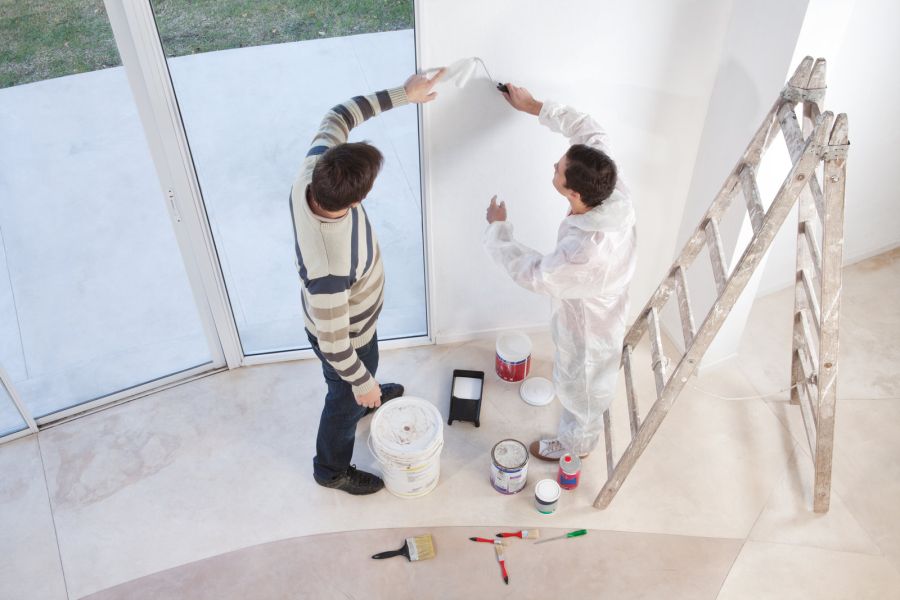
Tired of seeing those pesky mold and mildew spots? Discover expert tips and solutions that will keep your home looking clean and fresh. Don’t let fungi ruin your surfaces any longer. Read on to tackle mold and mildew like a pro and breathe a sigh of fresh air!
Contents
- 1 Effective Preparation: Remove Mold & Mildew Thoroughly
- 2 Understanding Servpro’s Mold-Killing Techniques
- 2.1 • Identifying the Mold Problem
- 2.2 • The Mold Remediation Process
- 2.3 • Choosing the Right Mold Remediation Partner
- 3 Top Solutions for Efficient Mold Elimination
- 4 Permanent Mold Removal: Effective Methods Reviewed
- 5 Guide to Adequate Personal Protective Equipment for Mold Cleaning
Effective Preparation: Remove Mold & Mildew Thoroughly
• Understanding Mold and Mildew
Mold and mildew are types of fungi that thrive in damp and dark environments. They are not only unsightly but also pose health risks if not dealt with promptly. Mold can cause respiratory issues, and skin irritations and may even lead to more serious conditions like asthma.
Hence, it is essential to eliminate mold and mildew from your home and take preventive measures to stop their recurrence.
• Identifying the Source
Before taking steps to eliminate mold and mildew, it’s important to determine the source of the problem. High humidity, water leaks, and poor ventilation are common causes of mold growth. Look for signs of water damage, unsealed windows, and poorly ventilated areas.
If necessary, enlist the help of a professional mold inspector to pinpoint the exact source.
• Adequate Cleanup Methods
Different surfaces require diverse cleanup techniques for mold and mildew removal. Below are some recommended methods for various surfaces:
– Hard surfaces
- Use a mixture of one-part bleach and ten parts water to scrub mold off non-porous surfaces such as tiles, countertops, and glass.
- Rinse the area thoroughly with clean water and dry it using a clean cloth or towels.
- If the mold persists, repeat the process.
– Porous surfaces
Removing mold from porous materials like carpets, drywall, and upholstery can be challenging. In some cases, it would be best to replace the material entirely. However, depending on the severity of the mold growth, you can try the following steps:
- Gently brush or vacuum the surface to remove loose mold spores.
- Use a commercial mold inhibitor or a mixture of one-part vinegar and one-part water to clean the affected area.
- Rinse thoroughly, and let the surface air dry.
– Clothing and textiles
- Wash clothes in hot water with a suitable detergent.
- Dry the clothes in direct sunlight or use a high heat setting on the dryer.
- Check to ensure that there is no remaining mold; if needed, repeat the process.
• Prevent Mold and Mildew Reoccurrence
Below are some recommendations to prevent mold and mildew from returning:
– Improve ventilation
Proper ventilation is critical to reducing moisture levels that contribute to mold and mildew growth. Implement the following measures:
- Use exhaust fans in bathrooms and kitchens.
- Ensure that clothes dryers are vented outside the house.
- Keep windows open when possible, or use air purifiers in enclosed spaces.
- Maintain proper indoor humidity levels between 30% and 50%.
– Attend to water leaks promptly
Leaks from roofs, pipes, or damaged walls should be repaired immediately to prevent mold growth. Regularly inspect potential problem areas and fix any issues right away.
– Regular cleaning
Routine cleaning is essential for mold prevention. Focus on high-moisture areas like bathrooms, kitchens, and basements. Always use disinfectants and specifically-designed mold cleaning solutions.
• Seek Professional Help if Needed
If mold and mildew persist despite your best efforts or the infestation is widespread, do not hesitate to contact a professional mold remediation service. They have specialized equipment and expertise to eliminate mold and ensure a healthy living environment.
In conclusion, eliminating mold and mildew takes rigorous effort and attention to detail. Properly identify the source of the problem before adopting appropriate cleanup methods.
Most importantly, prevent mold growth by improving ventilation, addressing water leaks, and maintaining a regular cleaning routine. Don’t hesitate to seek professional help when needed to ensure a safe and healthy living environment for you and your family.
Understanding Servpro’s Mold-Killing Techniques
Mold is a common problem found in many homes and buildings. It can grow unnoticed for long periods, leading to health issues and damage to the affected structures. Mold removal is crucial to maintain a healthy living environment and avoid costly renovations.
Servpro is a reputable professional mold remediation company that offers services to both residential and commercial properties.
• Identifying the Mold Problem
The first step in the mold remediation process is identifying the problem. Professionals at Servpro conduct a thorough inspection to locate the mold and determine its extent.
The team takes air and surface samples, which are sent to an accredited laboratory for testing. The lab results confirm the mold type present and the contamination’s severity.
If you suspect a mold issue in your home, acting quickly and consulting with an expert is essential. The Environmental Protection Agency (EPA) provides a comprehensive mold and moisture control guide, which you can access here.
• The Mold Remediation Process
Once the mold problem has been identified and assessed, Servpro professionals follow specific protocols to address the issue effectively. The remediation process typically involves the following steps:
– Containment and Personal Protective Equipment (PPE)
Before beginning mold removal, it is crucial to establish containment and ensure the safety of both the workers and the occupants. Servpro technicians seal off the affected area using plastic sheeting and establish negative air pressure to prevent the spread of mold spores during the cleaning process.
Workers wear personal protective equipment (PPE), such as gloves, masks, and goggles, to safeguard themselves from direct contact with the mold and the chemicals used for the remediation.
– Removal of Contaminated Materials
Depending on the extent of the contamination, it might be necessary to remove and dispose of moldy materials. Professionals at Servpro follow guidelines to ensure proper disposal of contaminated materials, such as carpet, drywall, and insulation.
Non-porous surfaces can be cleaned and salvaged using specific techniques and products.
– Cleaning and Mold-Removal Products
Servpro utilizes various cleaning agents and antimicrobial products to eliminate mold and prevent its recurrence. Some of the most common products used are:
Hydrogen Peroxide Cleaners
Hydrogen peroxide cleaners are effective for killing mold on a variety of surfaces, including wood, tile, and textiles. These cleaners have a lower toxicity level compared to other mold remediation chemicals and do not leave a residual odor after treatment.
Quaternary Ammonium Compounds (Quats)
Quats are powerful antimicrobial agents that are effective against a wide range of microorganisms, including mold, bacteria, and viruses. Servpro uses EPA-registered quaternary ammonium solutions as part of their remediation process to kill mold and prevent future growth.
Concrobium Mold Control
Concrobium Mold Control is an EPA-registered solution that eliminates mold on both porous and non-porous surfaces. It is a non-toxic, odorless, and bleach-free product that not only kills mold but also prevents its recurrence by leaving a thin protective layer on the treated surface.
– Drying and Dehumidification
Proper drying and dehumidification are crucial to preventing mold regrowth. After cleaning and treating the affected surfaces, Servpro uses advanced drying equipment, such as high-speed air movers and industrial-grade dehumidifiers, to remove excess moisture from the area.
– Post-Remediation Verification
Once the remediation process is complete, Servpro conducts a post-remediation verification (PRV) to ensure that the mold has been effectively removed and the area is safe for re-entry.
This step involves visual inspection, air sampling, and surface testing to confirm that the mold levels meet acceptable standards.
• Choosing the Right Mold Remediation Partner
Selecting the right mold remediation partner is vital to ensure a successful outcome. Servpro’s proven processes and use of industry-best practices make it a preferred choice for homeowners and businesses alike.
They have a team of certified professionals who undergo rigorous training and are equipped with the latest tools and technology.
In conclusion, Servpro employs a comprehensive approach to mold remediation using a combination of containment, removal of contaminated materials, effective cleaning agents, proper drying and dehumidification, and post-remediation verification.
Their expertise, professionalism, and commitment to customer satisfaction make them a trusted partner in addressing mold-related issues.
Top Solutions for Efficient Mold Elimination
Mold can be a persistent and annoying problem in homes and buildings. It can pose a serious health risk, particularly to those with allergies, asthma, and weakened immune systems.
• Identifying the Source of the Problem
Before attempting to remove mold, it is essential to identify the source of the problem. Mold thrives in damp, moist conditions, and addressing moisture issues is critical to success. Look for signs of water damage or leaks, and fix any plumbing, roofing, or ventilation problems that may be present.
• Cleaning Moldy Surfaces
Once the moisture issue has been addressed, it’s time to clean the moldy surfaces. It’s important to wear protective gear as mold spores can cause respiratory issues. Gloves, goggles, and a mask should be worn while cleaning moldy areas.
– Non-porous Surfaces
For non-porous surfaces such as glass, metal, and plastic, a solution of water and mild detergent should be used. Scrub the moldy area with a stiff-bristled brush, rinse with water, and dry thoroughly. Alternatively, use a 1:1 mixture of water and white vinegar for a more natural cleaning solution.
– Porous Surfaces
Porous materials, such as wood and drywall, may require more aggressive treatment. Combine water and a mold-killing detergent or a bleach solution of 1 cup bleach to 1 gallon of water. Apply the solution to the moldy area, let sit for 15 minutes, then scrub and rinse.
Make sure to wear gloves and a mask, and ventilate the area while working with the bleach solution.
– Soft Materials
Items like carpets, upholstery, and clothing require a different approach. For machine-washable fabrics, use hot water and a detergent designed for mold removal. For carpets and upholstery, use a steam cleaner or have them professionally cleaned.
Note: Moldy items that cannot be thoroughly cleaned or whose value does not warrant the cleaning effort should be discarded.
• Preventing Mold Growth
After successful mold removal, it’s crucial to take preventive measures to keep it from returning. Here are some tips:
– Maintain Humidity Levels
Humidity levels in your home should be kept between 30% and 50%. Use a dehumidifier or air conditioner, or increase ventilation in high-humidity areas such as bathrooms and kitchens.
– Proper Ventilation
Ensure that there is proper ventilation in rooms that produce moisture, such as kitchens, bathrooms, and laundry rooms. Use exhaust fans or vents in these areas to remove moisture from the air.
– Regular Inspections
Inspect areas of the home that are prone to moisture regularly. Check for signs of water damage and mold growth, and address any potential problems immediately.
– Keep Surfaces Dry
Wipe down surfaces in areas prone to moisture, such as countertops, shower walls, and windows, to prevent water from accumulating.
– Use Mold-resistant Materials
Consider using mold-resistant materials when building, remodeling, or repairing your home. Mold-resistant drywall, paint, and insulation can significantly reduce the likelihood of mold growth.
• When to Call a Professional
In some cases, such as when mold covers a large area or presents a health risk, it may be necessary to call a professional mold remediation company. They have specialized equipment, training, and experience to effectively eliminate mold and prevent it from returning.
In conclusion, the best way to eliminate mold is to address the moisture issue at its source, clean affected surfaces and items appropriately, and take preventive measures to keep mold from returning.
While mold can be a daunting issue to deal with, following the steps outlined in this article can help you achieve a mold-free living environment.
Permanent Mold Removal: Effective Methods Reviewed
Mold is a common problem in many households and can have potentially harmful effects on health. Therefore, it is crucial to understand effective ways of permanently removing mold.
• Identifying Mold
Before we look at methods to remove mold permanently, it’s essential to know how to identify mold. Mold is a type of fungus that grows in damp or humid conditions. It can be found in various colors such as green, black, white, or gray.
The best way to tackle mold is to deal with it as soon as it appears- and for that, one must know what to look for. Mold often has a musty smell and can be found on walls, ceilings, floors, or in hidden areas such as behind appliances or wallpaper.
For more information on mold identification and its health risks, you can visit the CDC’s Mold website.
• Choosing the Right Mold Removal Method
There are several methods to remove mold permanently, and the choice depends on the severity of the mold problem and the type of surface affected. Here is a list of tried and tested mold removal techniques:
– Vinegar
Vinegar is an excellent natural cleaner and works well for removing mold from non-porous surfaces. To use vinegar, mix equal parts vinegar and water in a spray bottle, spray it on the moldy surface, and let it sit for about an hour. After this, use a stiff brush or a cloth to scrub off the mold.
I recommend using white distilled vinegar for mold removal. In my experience, it does not leave any strong lingering smell, and its acidity effectively kills mold.
– Baking Soda
Baking soda is another natural cleaning solution that can effectively remove mold. To use baking soda, mix one part baking soda with five parts water and spray it onto the moldy surface.
Let it sit for about 15 minutes, then scrub it with a brush or cloth. Rinse the surface with water to remove any residue, and reapply the solution if necessary.
– Hydrogen Peroxide
Hydrogen peroxide is an antifungal and antibacterial solution that can remove mold from various surfaces. To use hydrogen peroxide, mix one part 3% hydrogen peroxide with two parts water in a spray bottle.
Apply the solution directly to the mold and let it sit for about 15 minutes. Then, scrub the mold away using a brush and rinse the surface with water.
I have found that hydrogen peroxide is particularly effective for removing mold on porous surfaces like grout lines in the bathroom.
– Bleach
Bleach is a powerful mold killer but may not be the best option for all surfaces. It works well to remove mold from non-porous surfaces like tile, glass, or metal but can be ineffective on porous surfaces like wood, drywall, or fabric.
To use bleach, mix one part bleach with ten parts water and apply it to the moldy surface. Let it sit for about 15 minutes, then scrub away the mold using a brush or cloth. Rinse the surface thoroughly with water.
A word of caution: Bleach must be used with proper ventilation as the fumes can be harmful. Also, it should never be mixed with ammonia or other cleaning chemicals, as it can create toxic gas.
– Professional Mold Removal
If the mold infestation is widespread or has caused considerable damage to the building structure, it is advisable to call professional mold removal services. These experts will assess the situation, Identify the source of moisture, and use specialized equipment and methods to remove mold permanently.
I recommend considering professional mold removal services if you have exhausted other methods or if someone in the household has a compromised immune system.
• Prevention is Key
Once the mold is removed, it is crucial to take steps to prevent it from reoccurring. Here are some tips to minimize the risk of mold growth:
- Adequately ventilate your home and maintain a relative humidity level below 60%.
- Quickly attend to any water leaks, spills, or flooding incidents.
- Clean and maintain gutters and downspouts regularly.
- Ensure proper drainage away from your home’s foundation.
- Regularly inspect and clean air conditioning units, dehumidifiers, and exhaust fans.
For further information on mold prevention, you can refer to the EPA’s Mold Resources
In conclusion, effectively removing mold requires the right method and consistent prevention measures. Vinegar, baking soda, hydrogen peroxide, bleach, and professional mold removal services are proven techniques for dealing with mold.
Maintaining a clean and dry environment in your home is essential to prevent mold growth and ensure a healthy living space.
Guide to Adequate Personal Protective Equipment for Mold Cleaning
Mold is a common fungus that thrives in damp and humid conditions. Mold growth can lead to structural damage and potential health risks, which is why proper cleanup and removal are essential.
• The Importance of PPE for Mold Cleanup
Using proper PPE is critical when handling moldy materials, as exposure to mold can lead to various health issues, including allergies, asthma, and other respiratory problems.
Additionally, mold exposure can cause skin irritation, eye irritation, and even neurological symptoms in some cases. To minimize these risks, it is crucial to follow recommended guidelines for PPE when cleaning moldy areas.
The Occupational Safety and Health Administration (OSHA) and the Environmental Protection Agency (EPA) provide guidelines and recommendations for PPE usage during mold remediation.
• Essential PPE for Mold Remediation
Let us examine the critical components of PPE needed when dealing with mold removal and cleaning jobs.
– Respiratory Protection
Using a proper respirator is vital to protect against inhaling mold spores. The minimum recommended protection is an N95 filtering facepiece respirator. These respirators filter out 95% of airborne particles, including mold spores.
For higher levels of mold or more extensive remediation jobs, a half-face or full-face respirator with P100 particulate filters is recommended. P100 filters provide 99.97% efficiency in filtering airborne particles, offering additional protection over N95 respirators.
It is crucial to ensure the proper fit and follow the manufacturer’s guidelines for usage, inspection, and maintenance when using respirators.
– Eye Protection
Mold remediation often involves disturbing moldy materials, which can release spores and other particles into the air. To protect the eyes from mold particles and cleaning chemicals, it is essential to wear safety goggles or full-face respirators with integrated eye protection.
It is crucial to select goggles that provide a secure fit and ventilation to prevent fogging and shield the eyes from all angles to ensure effective protection.
– Gloves
Gloves protect the hands from direct contact with mold and cleaning products, preventing skin irritations and other potential health risks associated with mold exposure. Nitrile, latex, or rubber gloves are suitable for most mold remediation tasks.
When selecting gloves, it is essential to ensure they are thick enough to provide proper protection and the correct size to allow for adequate dexterity and comfort during the mold cleanup process.
– Protective Clothing
Coveralls or long-sleeved clothing is recommended when handling moldy materials to prevent direct contact with the skin. Disposable coveralls made of materials like Tyvek offer an effective barrier against mold spores while allowing for breathability and comfort.
In situations where mold contamination is widespread or when working with hazardous materials like asbestos, it may be necessary to wear disposable coveralls with attached hoods and booties to provide additional protection.
– Footwear Protection
Work boots or rubber boots should be worn to protect the feet from potential hazards and chemicals during the mold remediation process. For additional protection, disposable shoe covers can be worn over the work boots, especially when entering non-contaminated areas after working in mold-affected spaces.
• Proper Disposal and Decontamination of PPE
Disposable PPE, like coveralls and gloves, should be placed into a sealed plastic bag and properly disposed of after completing the mold cleanup task.
For reusable PPE components, like respirators and safety goggles, follow the manufacturer’s guidelines for cleaning and decontamination to ensure safe and effective protection in future use.
In conclusion, using the proper PPE when cleaning mold is crucial for the safety and well-being of all involved.
Following OSHA and EPA guidelines, selecting the appropriate PPE, and ensuring proper fit, usage, and maintenance will minimize potential health risks associated with mold exposure and enable a thorough and efficient mold remediation process.

